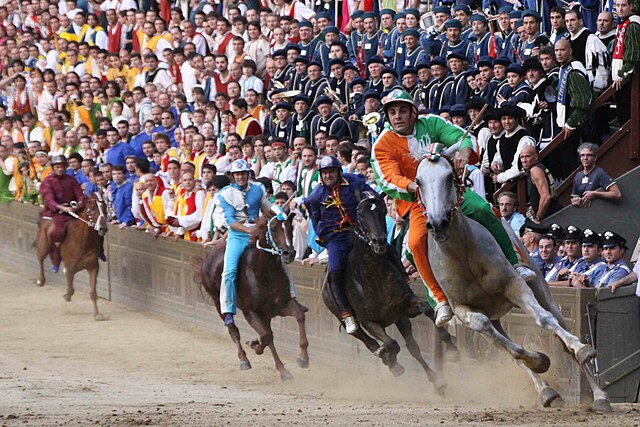Palio is the name given in Italy to an annual athletic contest, very often of a historical character, pitting the neighbourhoods of a town or the hamlets of a comune against each other. Typically, they are fought in costume and commemorate some event or tradition of the Middle Ages and thus often involve horse racing, archery, jousting, crossbow shooting, and similar medieval sports. Once purely a matter of local rivalries, many have now become events that are staged with an eye to visitors and foreign tourists.
The Palio di Siena in July 2010
The Palio di Siena is a horse race held twice each year, on 2 July and 16 August, in Siena, Italy. Ten horses and riders, bareback and dressed in the appropriate colours, represent ten of the seventeen contrade, or city wards, in a tradition dating back to the 17th-century. The Palio held on 2 July is named Palio di Provenzano, in honour of the Madonna of Provenzano, a Marian devotion particular to Siena which developed around an icon from the Terzo Camollia area of the city. The Palio held on 16 August is named Palio dell'Assunta, in honour of the Assumption of Mary.
Horse and jockey (fantino) turning a bend of the race course at Piazza del Campo
Palio alla tonda, 1633 by Bernardino Capitelli.
Thousands of spectators come to Piazza del Campo during the Palio di Siena.
Banners of the city's contrade sold before the race. (A contrada is a district, or a ward, within an Italian city.)





